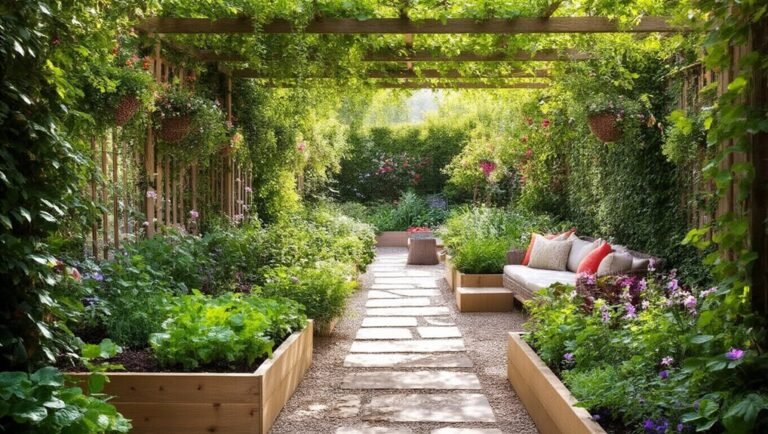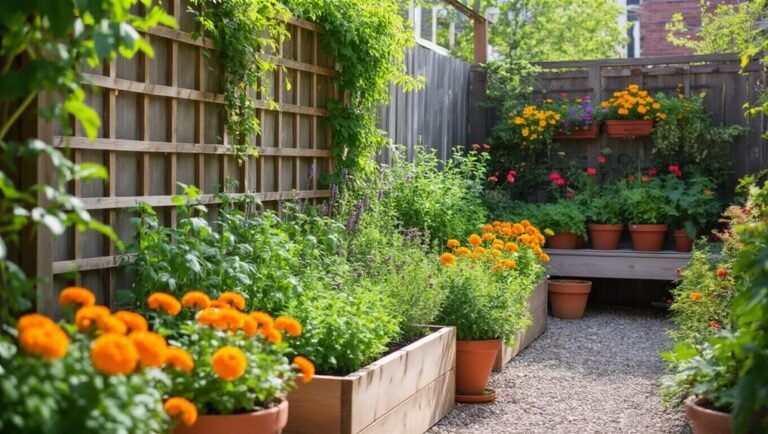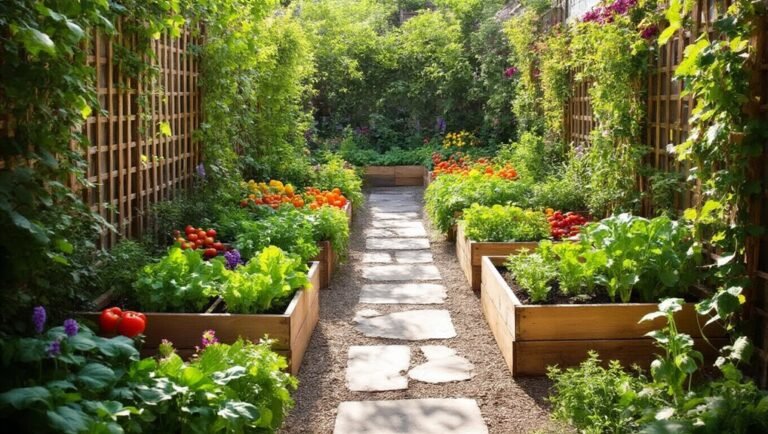If you’re looking to grow a garden at home this year, consider these four types: vegetable gardens for fresh produce, flower gardens that offer beautiful blooms, herb gardens for aromatic cooking, and container gardens perfect for small spaces. Each garden type has its unique benefits and requirements, making it easy to find the right fit for your lifestyle. Discovering the details can help you make the most of your gardening experience.
Key Takeaways
- Vegetable Gardens are ideal for homegrown produce like tomatoes and peppers, requiring plenty of sunlight and enriched soil.
- Flower Gardens combine perennials and annuals for year-round blooms, ensuring height variation and regular deadheading for continued beauty.
- Herb Gardens are easy to maintain and perfect for enhancing culinary dishes, with popular options like basil, mint, and rosemary.
- Container Gardens are perfect for small spaces, needing well-drained pots and quality soil, allowing for creative plant combinations.
- Garden Accessories like decorative stones, birdhouses, and fertilizer spreaders can enhance garden aesthetics and promote plant health.
Vegetable Gardens
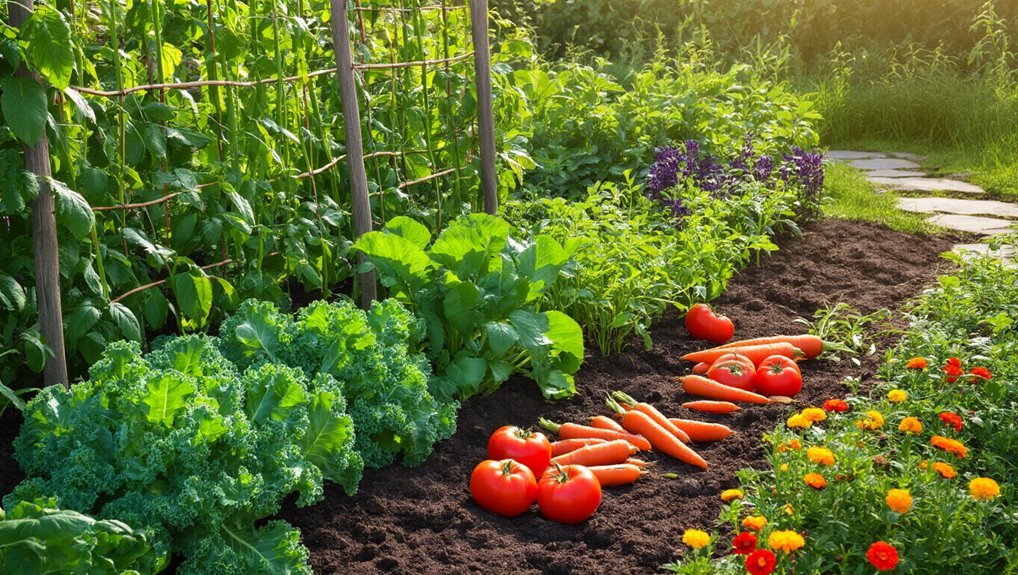
As spring approaches, you might find yourself eager to dig into your vegetable garden. This season offers the perfect opportunity to grow fresh produce right at home.
Start by selecting your favorite vegetables—think tomatoes, peppers, or leafy greens. Choose a sunny spot in your yard, ensuring it gets at least six hours of sunlight daily. For optimal results, consider nourishing your plants with the best plant food options to support robust growth throughout the season.
Prepare your soil by mixing in compost, which will enrich its nutrients. Once you’ve planted your seeds or seedlings, make sure to water them regularly, keeping the soil moist but not soggy.
Keep an eye out for pests and weeds, as they can hinder your progress. With a little care and attention, you’ll soon be harvesting delicious vegetables for your meals.
Consider using fertilizer spreaders to evenly distribute nutrients in your garden, promoting healthy plant growth.
Enjoy the fruits of your labor!
Flower Gardens
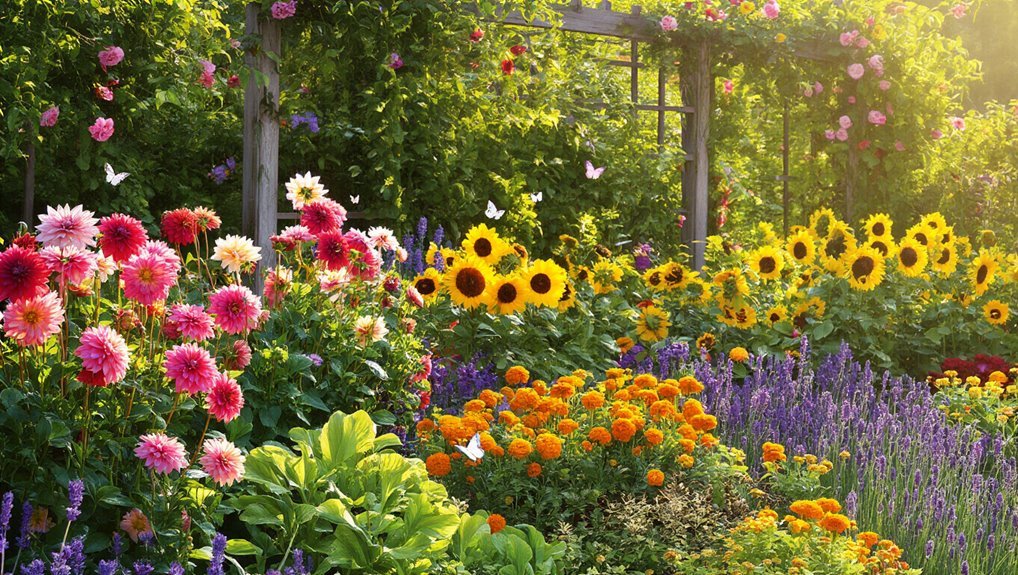
Creating a vibrant flower garden can transform your outdoor space into a colorful oasis. Start by choosing a mix of perennials and annuals to ensure blooms throughout the seasons. Consider your local climate and sunlight conditions; some flowers thrive in full sun, while others prefer partial shade. Don’t forget to plan for height variation—place taller plants at the back and shorter ones in the front for a balanced look. To further define your garden beds and add visual interest, consider using decorative garden stones as attractive borders or accents. Incorporate a variety of colors and textures to keep it visually interesting. Regularly deadhead spent blooms to encourage new growth and maintain the garden’s beauty.
Finally, add pathways or borders to define the space, making it not just a garden, but a delightful retreat where you can relax and enjoy nature. For an added touch of whimsy and function, consider placing Decorative Birdhouses for Gardens throughout your flower beds to enhance both the decor and attract charming bird visitors.
Herb Gardens
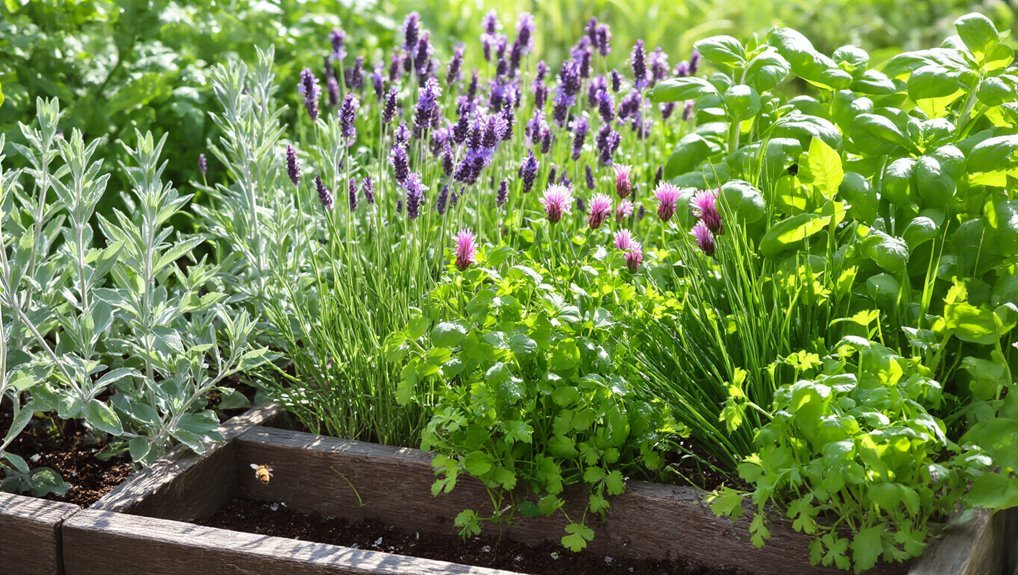
Flower gardens can bring beauty to your outdoor space, but don’t overlook the benefits of an herb garden. Growing herbs is not only rewarding but also practical. You can enjoy fresh flavors in your cooking while enhancing your meals with aromatic herbs. Plus, they’re easy to maintain and thrive in various conditions. If you want a convenient way to enjoy indoor herb gardens, you’ll find they’re perfect for kitchens, windowsills, or any sunny spot in your home.
Here’s a quick overview of some popular herbs to consider:
| Herb | Uses |
|---|---|
| Basil | Pesto, salads |
| Rosemary | Roasting, marinades |
| Thyme | Soups, stews |
| Mint | Teas, desserts |
| Cilantro | Salsas, garnishes |
If you’re ready to get started, consider using Herb Garden Kits with Seeds and Pots to make the process even easier and more convenient. Start your herb garden this year, and you’ll have a delightful and fragrant addition to your home, all while boosting your culinary adventures!
Container Gardens
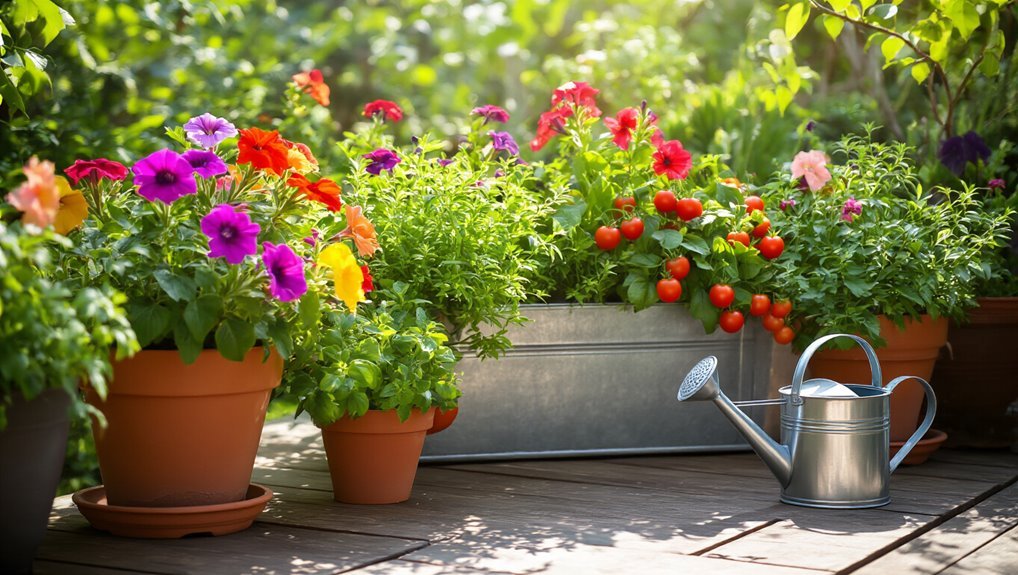
Whether you have a small balcony, patio, or even just a sunny windowsill, container gardens offer you the perfect opportunity to grow a variety of plants. You can choose from herbs, flowers, or even vegetables, all thriving in pots or containers.
Start by selecting the right containers—make sure they’ve drainage holes and are appropriate for your plants’ size. Use quality potting soil to ensure proper nutrients. For added comfort and safety while working, consider wearing gardening shoes to protect your feet during planting and watering.
Position your containers in areas with sufficient sunlight, and don’t forget to water regularly, as containers can dry out faster than garden beds.
Experiment with different plant combinations for a vibrant display. With a little creativity, container gardens can transform your space into a lush, green retreat.
For an instant style upgrade and healthier plants, consider using beautiful plant pots designed to elevate your space and support your garden’s growth.
Enjoy the process and watch your garden flourish!
Frequently Asked Questions
What Are the Best Gardening Tools for Beginners?
For beginners, essential gardening tools include a trowel, pruners, gloves, a watering can, and a hand rake. These tools’ll help you cultivate your garden effectively, making planting, maintenance, and harvesting enjoyable and efficient.
How Can I Attract Pollinators to My Garden?
To create a vibrant symphony of life, plant native flowers, use aromatic herbs, and avoid pesticides. You’ll invite pollinators, like bees and butterflies, to dance through your garden, ensuring a flourishing ecosystem that thrives.
What Is Companion Planting and How Does It Work?
Companion planting involves growing different plants together to enhance growth, repel pests, and attract beneficial insects. You’ll find certain combinations boost nutrient absorption, improve flavor, and create a healthier garden ecosystem that thrives together.
How Do I Manage Garden Pests Naturally?
Think of your garden as a bustling city; pests are unwelcome intruders. You can manage them naturally by introducing beneficial insects, using neem oil, and planting pest-repelling herbs. Keep your plants healthy, and they’ll thrive!
What Are the Benefits of Raised Bed Gardening?
Raised bed gardening offers improved soil drainage, easier access for planting, and better pest management. You’ll enjoy extended growing seasons, reduced back strain, and the ability to control soil quality, making gardening more efficient and enjoyable.
Conclusion
As you embark on your gardening journey, think of your garden as a canvas, where each type of garden represents a vibrant color in your palette. Whether you’re cultivating vegetables, flowers, herbs, or container plants, you’re painting a masterpiece that reflects your passion and creativity. So grab your tools, let your imagination bloom, and watch as your little slice of paradise flourishes, reminding you that with care and patience, beauty can grow in the most unexpected places.
